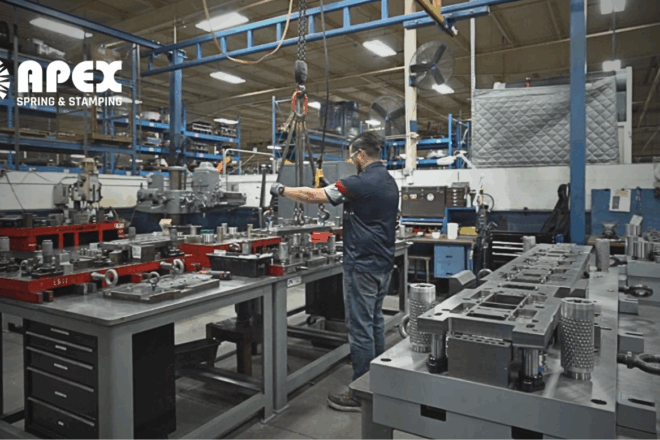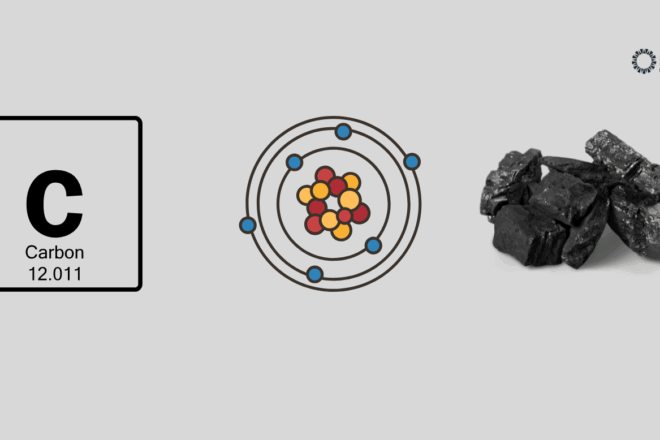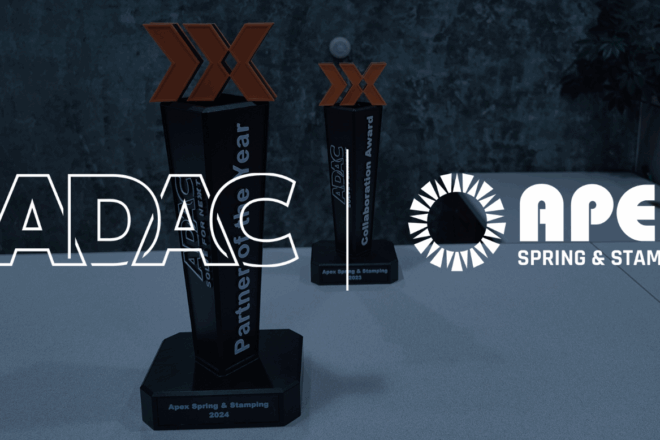What is Wire Forming
The wire-forming process refers to the manufacturing method used to shape metal wire into various forms and shapes. This process involves manipulating the wire using bending, cutting, coiling, and welding techniques to create different wire-based products.
Wire forming has become increasingly popular across various industries due to its versatility, cost-effectiveness, and ease of customization. The process is widely used in the automotive, aerospace, medical, and electronics industries to create products such as springs, clips, brackets, fasteners, and wire mesh.
The importance of the wire-forming process in the manufacturing industry cannot be overstated. It allows for producing complex shapes and sizes of wire-based products, which would be difficult or impossible to achieve using other manufacturing methods. Additionally, wire forming is a highly efficient and cost-effective process that produces high-quality products at a low cost.
The following will discuss the materials used in wire forming, wire forming techniques, wire forming machines, wire forming applications, quality control and inspection methods for wire forming, the advantages and disadvantages of wire forming, and the future of wire forming.
Contact Us
Material Used
The wire-forming process involves working with a variety of materials. The choice of material depends on the application and the final product’s desired properties. The following are some of the most important properties to consider when selecting wire forming materials and the properties possessed by the most common wire forming materials.
Properties of Materials Used in Wire Forming
The properties of the materials used in wire forming play a crucial role in determining the final product’s strength, durability, and other characteristics. Some of the essential properties to consider when selecting materials for wire forming include the following:
- Tensile Strength
The ability of the material to resist deformation when subjected to tensile forces. - Ductility
The ability of the material to deform under tensile stress without fracturing. - Corrosion Resistance
The ability of the material to resist corrosion and degradation caused by environmental factors. - Electrical Conductivity
The ability of the material to conduct electricity. - Thermal Conductivity
The Ability of material to conduct heat.
Types of Materials Used
- Steel
Steel wire is commonly used in wire forming because of its strength, ductility, and conductivity. There are several steel wire types, including high-carbon, low-carbon, and stainless steel. - Aluminum
Aluminum wire is lightweight, corrosion-resistant, and has excellent electrical conductivity, making it suitable for electrical applications. - Copper
Copper wire is highly conductive and ideal for electrical applications. It is also resistant to corrosion and has good ductility. - Brass
Brass wire is a combination of copper and zinc. It is highly corrosion-resistant and has good electrical conductivity. - Nickel
Nickel wire has excellent resistance to corrosion and is suitable for high-temperature applications. It is often used in the aerospace and medical industries.
The choice of material for wire forming depends on the desired properties of the final product. Steel, aluminum, copper, brass, and nickel are among the most commonly used materials, and their properties play a crucial role in determining the final product’s characteristics.
Techniques
Wire forming techniques refer to the various methods used to manipulate wire into different shapes and forms. These techniques are critical in creating a range of wire-based products, including springs, clips, fasteners, and wire mesh. There are both basic wire forming techniques and advanced wire forming techniques worth noting. Below, we discuss some of the basic wire forming techniques.
Basic Wire Forming Techniques
- Bending
Bending involves the manipulation of wire to create various angles, curves, and shapes. It is one of the most basic wire-forming techniques for creating products such as brackets and hooks. - Cutting
Cutting involves using specialized equipment to cut the wire into different lengths and shapes. It can be used to create wire forms, wire baskets, or even springs. - Coiling
Coiling involves winding wire around a cylindrical object to create a coil. It is used to create products such as springs and wire forms.
Advanced Wire Forming Techniques
In addition to these basic techniques, there are also more advanced wire forming techniques, such as:
- Welding
Welding involves joining two or more wires by melting and fusing them together. It is used to create products such as wire mesh and wire baskets. - Swaging
Swaging involves compressing a section of wire to create a smaller diameter. It is used to create products such as wire rope and cable. - Drawing
Drawing involves pulling a wire through a die to reduce its diameter and increase its length. It is used to create products such as wires for electrical applications.
Wire-forming techniques have evolved, with manufacturers developing new and more advanced techniques to create complex wire-based products. Basic wire-forming techniques such as bending, cutting, and coiling are essential in creating simple wire-based products. However, advanced wire-forming techniques such as welding, swaging, and drawing require specialized equipment and skilled operators and are used to create more complex wire-based products.
Here at Apex Spring & Stamping, our ream is highly skilled and can perform these advanced wire forming techniques to your specifications. With our specialized equipment and state of the art facility we can provide efficiency and precision.
Request A Quote
Wire Forming Machines
Wire-forming machines are specialized equipment used in the manufacturing industry to create wire-based products. These machines are designed to perform various wire-forming techniques such as cutting, bending, coiling, and welding. The following are components common to all types of wire-forming machines and their specific components.
Components of Wire Forming Machines
- Control System
The control system of wire-forming machines allows operators to program the machine to perform specific wire-forming techniques. - Feeding System
The feeding system of wire-forming machines feeds wire into the machine. - Cutting System
The cutting system of wire-forming machines is responsible for cutting the wire to the desired length and shape. - Bending System
The bending system of wire-forming machines is responsible for manipulating wire into various shapes and forms. - Coiling System
The coiling system of wire-forming machines is responsible for winding wire around a cylindrical object to create coils of different sizes and shapes. - Welding System
The welding system of wire-forming machines is responsible for joining two or more wires by melting and fusing them.
Types of Wire Forming Machines
In addition to these common components or systems shared by all wire forming machines, various types of wire forming machines possess unique systems based on their specific application. Such as:
- Wire Bending Machines
Wire bending machines are designed to manipulate wire into various shapes and forms. They can be programmed to create simple or complex wire-based products. - Wire cutting Machines
Wire cutting machines are designed to cut the wire into different lengths and shapes. They can be programmed to make precise cuts, ensuring consistent product quality. - Wire Coiling Machines
Wire coiling machines are designed to wind the wire around a cylindrical object to create coils of different sizes and shapes. They are commonly used in the production of springs and wire forms. - Wire Welding Machines
Wire welding machines are designed to join two or more wires by melting and fusing them. They are commonly used in the production of wire mesh and wire baskets. - Wire Swaging Machines
Wire swaging machines reduce the diameter of wire by compressing it between two dies. Wire-swaging machines can create medical devices, aerospace components, and automotive parts. - Wire Drawing Machines
Wire drawing machines pull wire through a series of dies to reduce its diameter and increase its length. Wire drawing machines can create a wire of various sizes and shapes, including round, square, and rectangular wire. They are commonly used to manufacture wires in electrical cables, jewelry, and other applications.
Wire Forming Applications
Wire forming has various applications in various industries due to its versatility and reliability. The following are some industries that use wire forming in their manufacturing processes.
- Automotive
Wire forming produces various automotive components such as springs, brackets, and clips. These components play a critical role in the functioning of vehicles and ensure optimal performance and safety. - Aerospace
Wire forming is used in the aerospace industry to create wire-based components such as brackets, clips, and springs. These components are used in aircraft and space vehicles and are critical in ensuring their functionality and safety. - Medical
Wire forming is used in the medical industry to create wire-based components such as surgical instruments, medical devices, and implants. These components are essential in ensuring patient safety and improving medical outcomes. - Electronics
Wire forming is used in the electronics industry to create wire-based components such as connectors, terminals, and sensors. These components are used in various electronic devices and are crucial to their functionality.
Wire forming also has numerous applications in other industries, such as construction for reinforcing concrete structures, defense for manufacturing components for military vehicles, and consumer goods such as kitchen appliances or sporting equipment. In addition, its versatility and reliability make it an essential component in the manufacturing process of various products.
In conclusion, wire forming has a wide range of applications in various industries due to its versatility and strength. The automotive, aerospace, medical, and electronics industries are just some of the industries that extensively use wire forming in their manufacturing processes. As a result, wire forming is an essential component in manufacturing various products and plays a critical role in ensuring their functionality and safety.
Need help determining the right solution for your application? Contact us to start a conversation with one of our experienced team members or request a quote today.
Quality Control and Inspection
Quality control and inspection play a critical role in wire-forming processes. The following section highlights the importance of quality control and inspection in wire forming and the methods used for quality control and inspection.
Importance of Quality Control and Inspection in Wire Forming:
- Ensure Product Consistency
Quality control and inspection help ensure that wire-formed products are consistent in quality, dimensions, and specifications. This ensures that the products meet the required standards and perform as expected. - Detect Defects
Quality control and inspection help detect defects in wire-formed products early in production. This ensures that defective products are identified and removed before they reach customers, thus preventing recalls and product failures. - Compliance with Standards
Quality control and inspection helps ensure that wire-formed products comply with industry standards, regulations, and safety requirements. This ensures that the products are safe and meet the required quality standards.
Methods of Quality Control and Inspection in Wire Forming:
- Visual Inspection
Visual inspection is a quality control method that involves visually examining wire-formed products for defects such as surface scratches, cracks, and deformations. - Dimensional Inspection
Dimensional inspection is a quality control method that involves measuring the dimensions of wire-formed products using various tools such as calipers, micrometers, and gauges. This ensures that the products meet the required specifications and tolerances. - Non-Destructive Testing
Non-destructive testing is a method of quality control that involves testing wire-formed products for defects without causing damage to the products. This includes magnetic particle inspection, ultrasonic testing, and radiographic testing. - Statistical Process Control
Statistical process control is a quality control method that involves monitoring and controlling the wire-forming process to ensure that the products meet the required specifications. This involves analyzing data collected using sensors, gauges, or other measurement devices that are integrated into the manufacturing process, and making necessary adjustments to the production process to improve quality and consistency. The data that is collected may include various process parameters such as temperature, pressure, flow rate, and cycle time, as well as measurements of product quality such as dimensional accuracy, surface finish, and hardness.
Quality control and inspection are critical in wire-forming processes. They help ensure product consistency, detect defects, and ensure compliance with industry standards and safety requirements. Visual inspection, dimensional inspection, non-destructive testing, and statistical process control are methods used for quality control and inspection in wire forming.
Advantages and Disadvantages of Wire Forming
Wire forming is a versatile manufacturing process that offers several advantages and disadvantages. The following section highlights the advantages and disadvantages of wire forming.
Advantages
- Versatility
Wire forming is a versatile process that can create various wire-based components such as springs, brackets, and clips. - Cost-Effective
Wire forming is a cost-effective manufacturing process as it requires minimal tooling and can produce high volumes of products at a low cost. - Precision
Wire forming allows for high precision in creating wire-based components. This ensures that the products meet the required specifications and tolerances. - Strength
Wire-formed components are strong and durable, making them ideal for use in various automotive, aerospace, and medical industries. - Customization
Wire forming allows for customizing wire-based components to meet the specific requirements of different industries and applications.
Disadvantages
- Material Limitations
Wire forming is limited to materials that can be easily bent or shaped into wire form. This limits the range of materials that can be used in wire-forming processes. - Design Limitations
Wire forming is limited to designs easily created using wire. This limits the range of complex designs created using wire-forming processes. - Tooling Costs
While wire forming is cost-effective, the tooling cost can be high. This can make wire forming less feasible for small-scale productions. - Surface Finish
Wire forming can result in surface scratches or deformations on the wire-formed components, affecting their appearance and performance. - Skill-Intensive
Wire forming requires skilled operators to ensure the wire-formed components meet the required specifications. This can increase the cost of labor and training.
wire forming is a versatile manufacturing process that offers several advantages, such as cost-effectiveness, customization, and high precision. Furthermore, wire-forming techniques have advanced significantly in recent years, with new technologies and equipment that have made it possible to produce complex and intricate wire forms.
While wire forming does have some disadvantages, such as the need for specialized equipment and skilled operators, these challenges can be overcome with the right training and investment in equipment. Apex is highly skilled at helping them to create high-quality products that meet the needs of our customers.
Future of Wire Forming
Wire-forming technology continually evolves, and wire forming manufacturers constantly seek new ways to improve their processes. The following section highlights some emerging trends and innovations in wire-forming technology that may serve to further benefit manufacturers in the future.
Trends in Wire Forming Technology
- Automation
Manufacturers are increasingly incorporating automation into wire-forming processes. This includes using robotics and computer-controlled machines to improve efficiency and reduce labor costs. - Advanced Materials
The development of new materials, such as shape-memory alloys and advanced composites, is expanding the range of materials used in wire-forming processes. - 3D Printing
3D printing technology in wire-forming processes enables the creation of complex wire-based components that were previously challenging to manufacture.
Innovations in Wire Forming
- Smart Wire Forming
This technology involves embedding sensors into wire-formed components to monitor performance and detect defects or failures. - Laser Wire Forming
Laser technology is being used to shape wires accurately and precisely, resulting in components with higher tolerances and greater strength. - Micro Wire Forming
This technology uses ultra-thin wires to create micro-components in various medical devices and electronics applications.
As a leader in the production of high-quality stamping products, you can be confident in the products, solutions, services, and value we provide to our customers. It is always our goal to meet and exceed the needs of our customers.
Get the conversation started today!
| Contact Us | Request A Quote |




